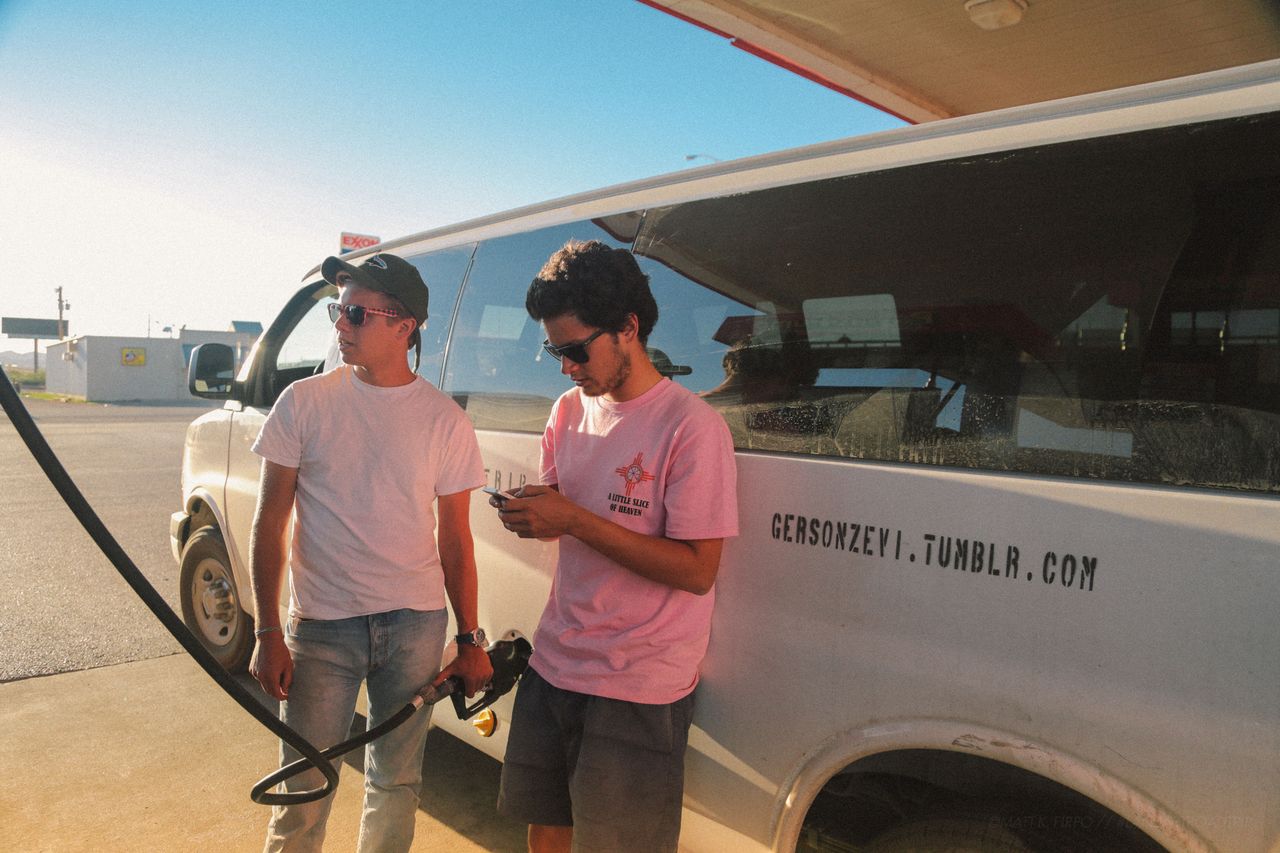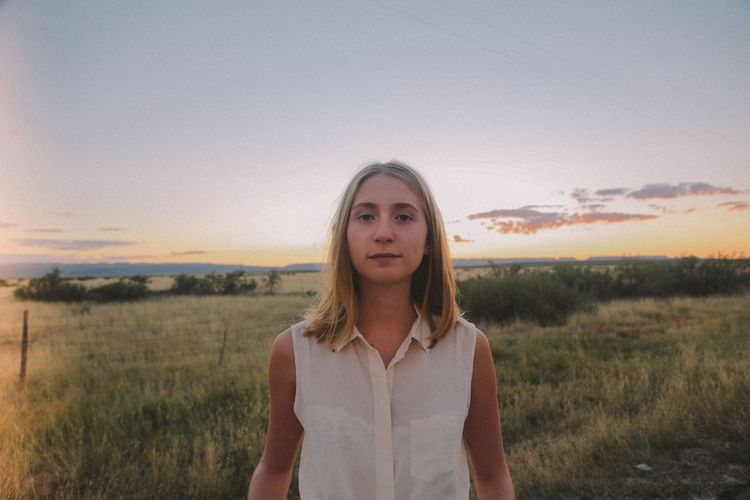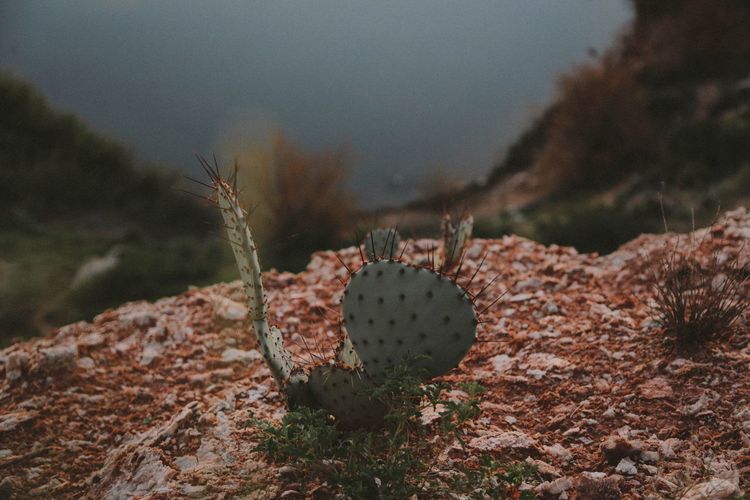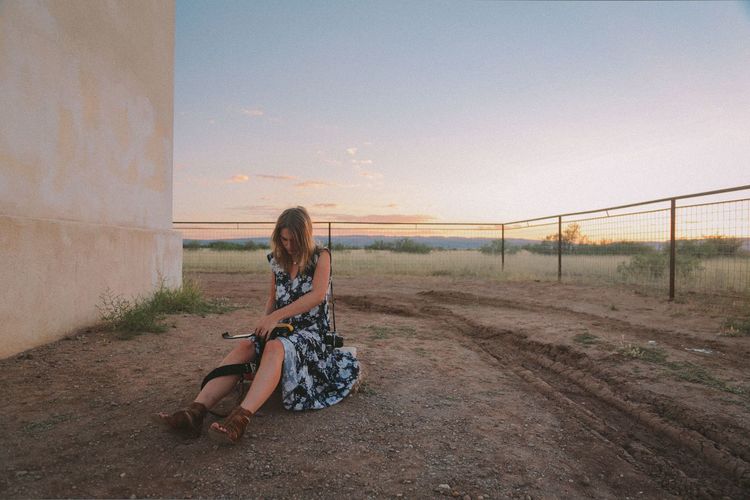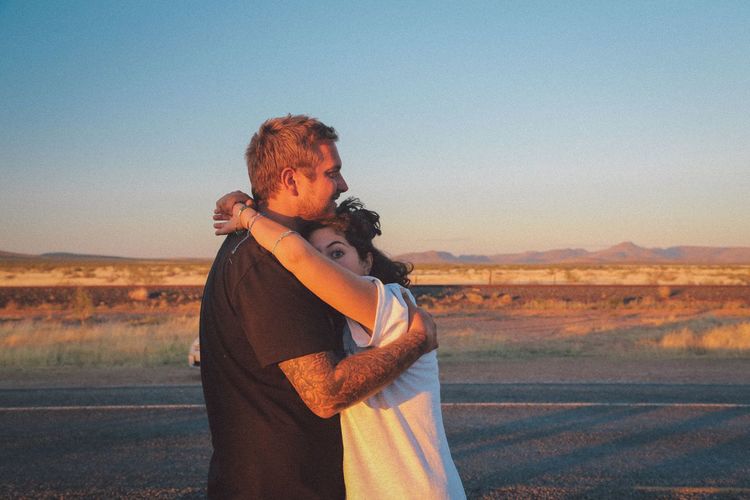Monday, October 2nd, 2013
3:23pm - On the Road from Roswell, New Mexico, to Marfa, Texas
Something I’ve come to find surprisingly interesting while on the road are the numerous pit stops we’ve made at different service terminals. What’s so exciting about a gas station, you might ask? Don’t they all look the same? You would definitely think that, but you’d be wrong. They are not all the same, and like every piece of art that we admire, the beauty of a gas station lies in its details. Although these edifices serve to supply gasoline, what you are also guaranteed to come across is an accompanying convenience store. This store often sells snacks, cigarettes, and other regalia you might need for long drives. In many gas stations you might also find souvenirs like postcards and key chains that celebrate the area’s culture. That aspect of the many stops we’ve made has amused me. I’ve found it to be very telling of the area that we’re in. For instance, in Utah what first caught my attention was the price of cigarettes. At only four dollars a pack, they were nearly three times less than the average price of the same brand sold in New York. That alone allowed me to understand that the cost of living here was far less than the big and bustling city I hailed from. It helped me see that Utah was a land of miles and miles of innocent, beautiful nothingness and not of materialism.
In Arizona, the most prominent aspect of their gas stations was the amount of Native American made accessories for sale. Everything from dream catchers to turquoise jewelry was clearly visible in almost every station we happened upon. What’s more intriguing is that these items were sold in a way that seemed to trap tourists; I personally fell for it. I bought a pair of earrings and a variety of bracelets for an exaggerated price. I mean, what gas station sells $35 dollar earrings? They seemed worth it to me, especially if they were helping the Native Americans living in the area. From what I saw and heard in Arizona, that ethnic group was consistently subjected to racism and was undervalued as a result. One night while at a bar in Page, Arizona, a member of the group had intruded a high school reunion in which the guests were playing a game of “Cigarettes and Secrets,” a pastime which involved smoking outside while talking about things you were ashamed to make public in any other circumstance. The most common secrets related to Native American people, specifically sleeping with them. Apparently, it was very much frowned upon to have a relationship with someone of Native American descent in Arizona. This sentiment wasn’t at all surprising after observing the way in which Native American items were segregated from the rest in Arizona service stations.
Now that we’ve stopped in Texas, I can already deduce what they may value here. The first thing that caught my attention was the barbeque restaurant attached to the gas station. As I walked into the store, a large man exited while stuffing his mouth with a heap of juicy brisket. With his blissful facial expressions, some of the Land Art members soon followed his lead. Taking a nibble from a friend’s portion I was amazed at how delicious gas station brisket could be. However, I decided to further venture into the shop in search of a healthier snack. Walking by rows of large cowboy hats and the greatest, most diverse display of beef jerky I have ever seen, I quickly believed the large sign that greeted us when we first arrived in Texas. Everything really is bigger here.
11:07pm - El Cosmico, Marfa, Texas
We caught Elmgreen and Dragset’s sculpture, Prada Marfa, right as the sun was beginning to set. Sitting at our new campsite and reflecting, I can definitely say that this piece has felt the most relatable to me. The sculpture, meant to look like an exact model of a Prada store, is installed in yellow grass and tumbleweed. Going with the popular Land Art theme of isolation, the sculpture is surrounded by nothing but open space. What you see is a Prada store, on the side of the road, in the middle of nowhere. At first, it doesn’t really make sense, but the more time you spend considering it, the more you understand the meaning behind the piece. Likewise, only two days after leaving New York Fashion Week in heels, I was camping in receptionless Utah in leggings and a Patagonia pullover. I was in disbelief; it didn’t feel right and my friends couldn’t imagine it. I felt just like a Prada store, left barren in the rural southwest. Now three weeks into the Land Art Road Trip, I feel like I belong to this group much more than I did when I was initially thrown into it, as I’m sure this sculpture feels to Texas residents who’ve lived alongside it for the past eight years.
Very recently, the state of Texas attempted to knock down Elmgreen and Dragset’s most well known work. Claiming the piece is an illegal advertisement, the government believes it should never have been installed back in 2005. Without considering its purpose, someone might think that. But with time and proper education, it’s clear that the Prada Marfa provokes intelligent thought on pop culture in America- specifically the role materialism and brand names have in it. A Prada store does not fit here. This land serves as a peaceful, natural environment, not to be distracted by merchandising. American consumerism, however, is taking over our country. Money is our nation’s prime concern. What was once open land a century ago may now very well be a shopping mall. We value business and we ruin our environment by letting it replace what’s natural. It’s a difficult concept to see in New York, but here in southwest Texas it’s apparent. That’s the point of Elmgreen and Dragset’s work. How far are we going as a culture before we replace everything that is supposed to be here with more, unnecessary retail locations?
The Prada Marfa is important and its role is to show its visitors the plight of American consumerism and materialism. This is something visualized right outside of Marfa, but something I’ve personally experienced throughout the duration of this epic trip. Aside from my relationships, the things I value most are all material. Although I love fashion and will never cease to, I would never want it to take the place of nature. Clothing is replaceable and easy to obtain. Rivers, trees, grass and wildlife are not. Dear Texas, please don’t knock down the Prada Marfa. It’s an important piece that is illustrating exactly what your state has dreadfully become.
- - - - - - - - - - - - - - - - - -
Photography Credit: Matt Firpo
Matt Firpo is a passionate film maker and co-founder of Vanguard Ltd. Vanguard Ltd. is a full-service creative firm. With offices in New York and London, they specialize in commercial, fashion, and narrative projects worldwide. Founded by a team of award-winning filmmakers and visual artists, Vanguard Ltd. provides a handcrafted, boutique production experience for every client.
Originally published on Promote & Preserve.
